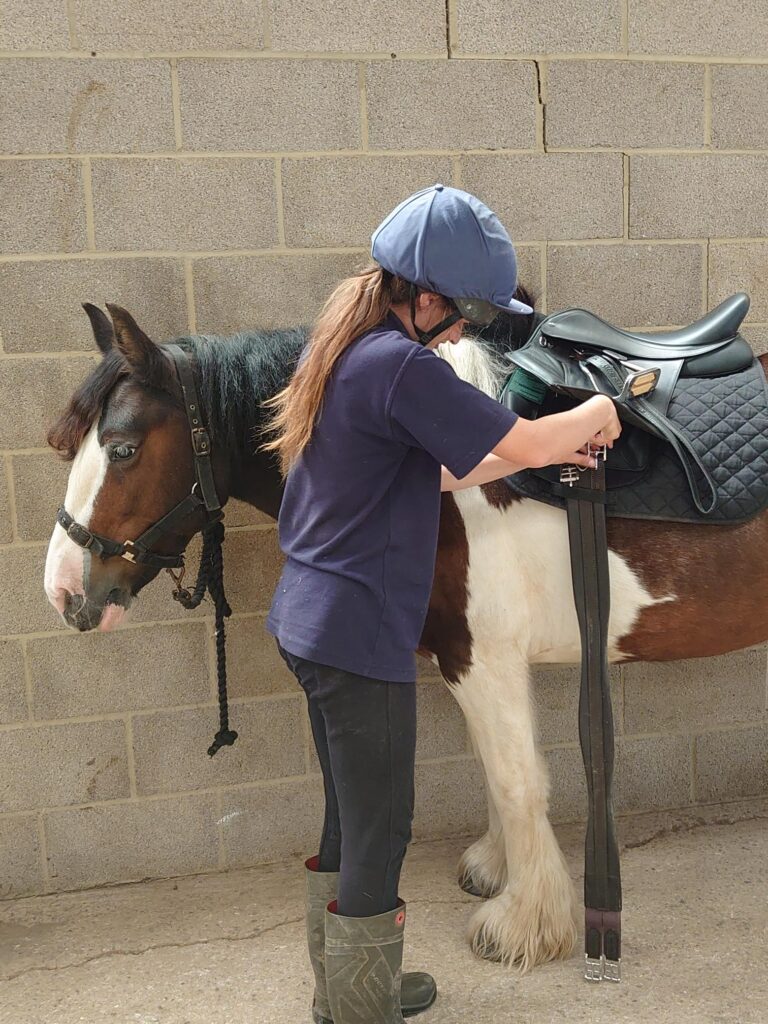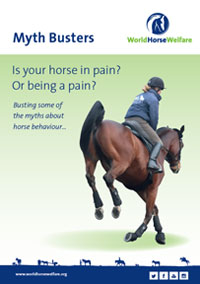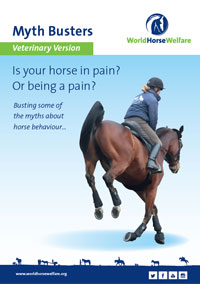Many owners and riders have had issues when riding a horse, whether that’s the horse bucking, napping to a gate or refusing to move. Similarly, when being tacked up, horses can display behaviours such as biting or kicking when the saddle is put on and the girth is done up. Horses are never intentionally naughty – any behaviours they display are simply a reflection of how they feel, physically and emotionally. If your horse is displaying signs of pain or discomfort, please contact your vet.

Our Welfare Wednesday webinars have included Dr Sue Dyson examining a series of behaviours that may indicate pain or discomfort when tacking up and in the ridden horse, including the subtle signs that may not always be noticed. If you think your horse is displaying signs of lameness such as a head nod, non-weight bearing on one leg/hoof or not using one or more limbs as expected – contact your vet.
When examining tacking up and mounting, Dr Sue Dyson recorded behaviours that may indicate pain, stress, anxiety, or aggression. In trying to find out what might be causing these behaviours, she found that lameness, poor saddle fit, and inappropriate rider size, position, and balance were common. Dr Sue Dyson also discovered that lameness, back pain, and poor saddle fit were associated with abnormal behaviours during tacking up and mounting.
Dr Sue Dyson has compared the behaviour of lame and sound horses and has come up with a list of behaviours that are much more common in horses that are in pain. This list of behaviours is known as the ‘Ridden Horse Pain Checklist’ and covers 24 behaviours. These include some that many of us wouldn’t traditionally associate with pain such as spooking, swishing the tail, and tilting the head. By learning what these behaviours are, we can all become better at spotting when a horse may be in pain. And then, rather than deciding that the horse is naughty, that there is a training problem, or that this is just normal behaviour for that horse, we can get professional help to identify and solve any underlying problem. With luck, the result will be a horse that is nicer to ride, performs better and – importantly – has a better quality of life.
In addition, Dr Sue Dyson has also developed the ‘myth busters’ guides for behaviours ridden horses may exhibit. Covering a total of 33 ‘myths’ that are commonly repeated by riders, coaches, owners – and some vets – this guide clearly sets out the role that musculoskeletal pain can play in many equine behaviours. With two versions, one for vets and one for those with no veterinary background, this document should help to debunk many of the myths that are compromising our horses’ welfare and jeopardising equestrianism’s social licence.
Myth busters: Is your horse in pain? Or being a pain?

Dr Sue Dyson’s illustrated guide to busting some of the many myths about ridden horse behaviour issues.
Myth busters: Is your horse in pain? Or being a pain?

Dr Sue Dyson’s illustrated veterinary version of the guide to busting some of the many myths about ridden horse behaviour issues.
You can access the myth busters guide in Polish here.
Popular advice in Behaviour

Training: how do horses learn?
Explore how horses learn and the training methods that we can use to train our horses whilst prioritising their physical and emotional health and welfare.

Separation anxiety: training your horse to be on their own
Not sure how to prepare your horse to be left on their own or have a horse with separation anxiety? Check out our top tips.
Other advice categories
All webinar categories:
Call our Advice Line
+44 (0)1953 497 238Not found the advice or answer you were looking for here? Then our Advice Line is available during office hours, or you can email us on education@worldhorsewelfare.org to let us know what topics you were looking for.


